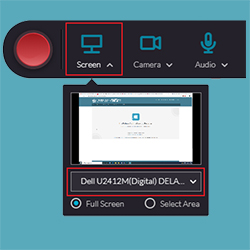Should I record?
By Cynthia Brame, CFT Associate Director
 This fall, we are all going to be thinking about how to ensure that our students can equitably access our courses, even when they have to miss a synchronous meeting. One of the questions we’ll have to answer is whether and when to record those meetings to provide to students for later access.
This fall, we are all going to be thinking about how to ensure that our students can equitably access our courses, even when they have to miss a synchronous meeting. One of the questions we’ll have to answer is whether and when to record those meetings to provide to students for later access.
There are several questions that I think can guide our thinking about when to record our class meetings.
- Questions about the goals of the session: Is content delivery a goal of the class meeting? Is student exploration and application of content the major goal of the session?
- Questions about the role of community and discussion in knowledge building: Does the session rely on active discussion among the students? Does the discussion rely on a feeling of community among the students? Does recording change students’ willingness to attend or to actively contribute?
- Questions about the student who must miss: What is lost for the student who is absent? Does watching the recording compensate/have the same benefit as being present? Are there other mechanisms that could compensate as well, and if so, what is the cost (in terms of time and effort) for the student and the instructor?
- Questions about equity: Do I have students who must miss my synchronous sessions regularly, perhaps because of a health issue or a location issue? If so, are there modifications I can make that ensure that these students are fully included in course activities, such as moving them to a different time, offering multiple (shorter) sessions, or making the discussion asynchronous?
I think we can think about this in similar ways to the way we think about students missing our F2F classes: when content delivery is a goal of the class meeting, then we try to help students capture the content in other ways. When recording is an easy option as it is on Zoom, then recording makes sense for content acquisition—although it might be a better idea to have a student who was present share notes and have a conversation with the student who missed. When the goal of the session is student exploration and application of content, then we will want to weigh the answers to the questions above to determine the best way to go forward. Sometimes that will mean recording a Zoom session, but sometimes it will mean other kinds of asynchronous engagement that is more interactive than passively watching a recording.
I think that Questions 1 and 2 are key starting points for making the decision about whether to record. In a face-to-face class, faculty are often worried about lecture capture leading students to skip class, but the impact of that differs according to the purpose of class. If class really is about content acquisition, then a video may be as good as a lecture (maybe a little worse in some ways, a little better in others). But if class is about using discussion or group problem-solving to help students build understanding, then a video isn’t as useful—watching other students discuss isn’t as valuable as being a part of that discussion. I can imagine a similar analysis for online synchronous classes.
Questions 3 and 4 can help us think about access and equity. If we want to help students who cannot attend class—and recording our sessions suggests we do—then we want to make sure that the alternative means to participate is robust and meaningful to students. It may be a small group discussion or problem-solving session (in Brightspace or using an alternative tool) that is available for students who missed to work on together, it may involve sharing a set of collaborative notes generated by students in class coupled with an office hour session for students who weren’t able to attend, or it may be a recorded class session—it’s really dependent on what students need and what’s possible and feasible for us as instructors to provide. We just don’t want students to get a substandard experience if they regularly cannot attend class. The Universal Design for Learning website has great ideas for ways to think about equity in all our classes.
I’ll be using these questions to guide my thinking about when I will and won’t record class meetings this fall, and I hope they prove useful to you as well.
.
.
.

Leave a Response